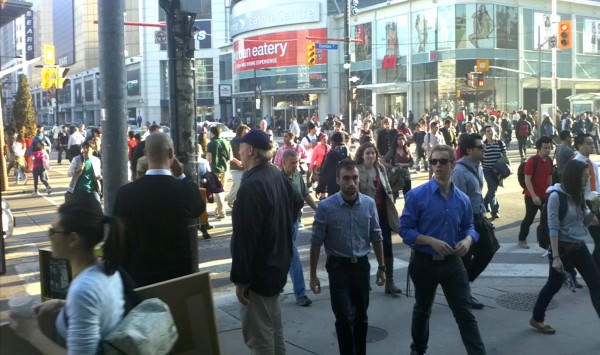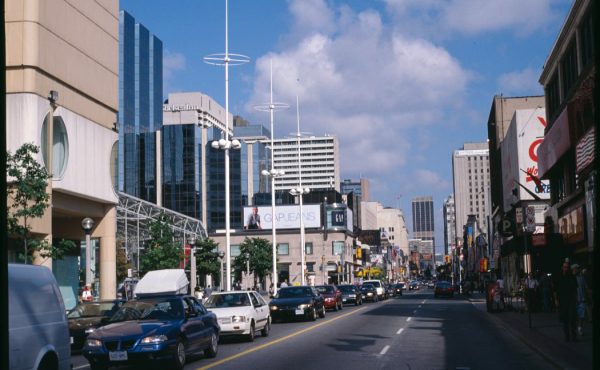A wide range of City of Toronto policies affect walking, but it’s not always easy to know about them or find them. This post provides a convenient list of links to these various policies, so that anyone who is interested can get an overview what the City is doing, or at least says it should be doing, to improve the pedestrian experience in Toronto. (Cross-posted from the Walk Toronto website).
- City of Toronto Walking Portal (links to policies and programs)
- Toronto Pedestrian Charter (2002)
- Toronto Walking Strategy (2009)
- Vibrant Streets Guidelines (PDF) (includes street furniture placement guidelines)
- Accessibility Design Guidelines (PDF)
- Streetscape Manual
- Traffic Calming Policy (PDF)
- Wayfinding Strategy
- Toronto Seniors Strategy
- Toronto Public Health: Walk to School
- Toronto Public Health: Walk into Health
- “The Walkable City: Neighbourhood Design and Preferences, Travel Choice and Health” (PDF) (Toronto Public Health report, 2012)
- “Road to Health: Improving Walking and Cycling in Toronto” (PDF) (Toronto Public Health report, 2012)
- Traffic Signal FAQs
- List of walks offered in Toronto (also for adding walks to this list)
- Pedestrian Collision Statistics, 2011 (PDF) (change the year in the URL to see earlier ones)
Various non-municipal organizations also provide useful information about walking policy and programs in Toronto:
- Metrolinx walk-to-school strategy
- Chief Coroner of Ontario Pedestrian Death Review (PDF)
- Toronto Centre for Active Transportation (independent work on walking and cycling policy)
- Jane’s Walk Toronto
- Jane’s Walk/University of Toronto Suburban Walkability Studies
- Active and Safe Routes to School
- 8-80 Cities
If I’ve missed anything, please add them in the comments.





3 comments
Thanks for aggregating these. One correction — the Vibrant Streets Guidelines URL.
Thanks – fixed.
Walking is something that is foreign to the Ford brothers.